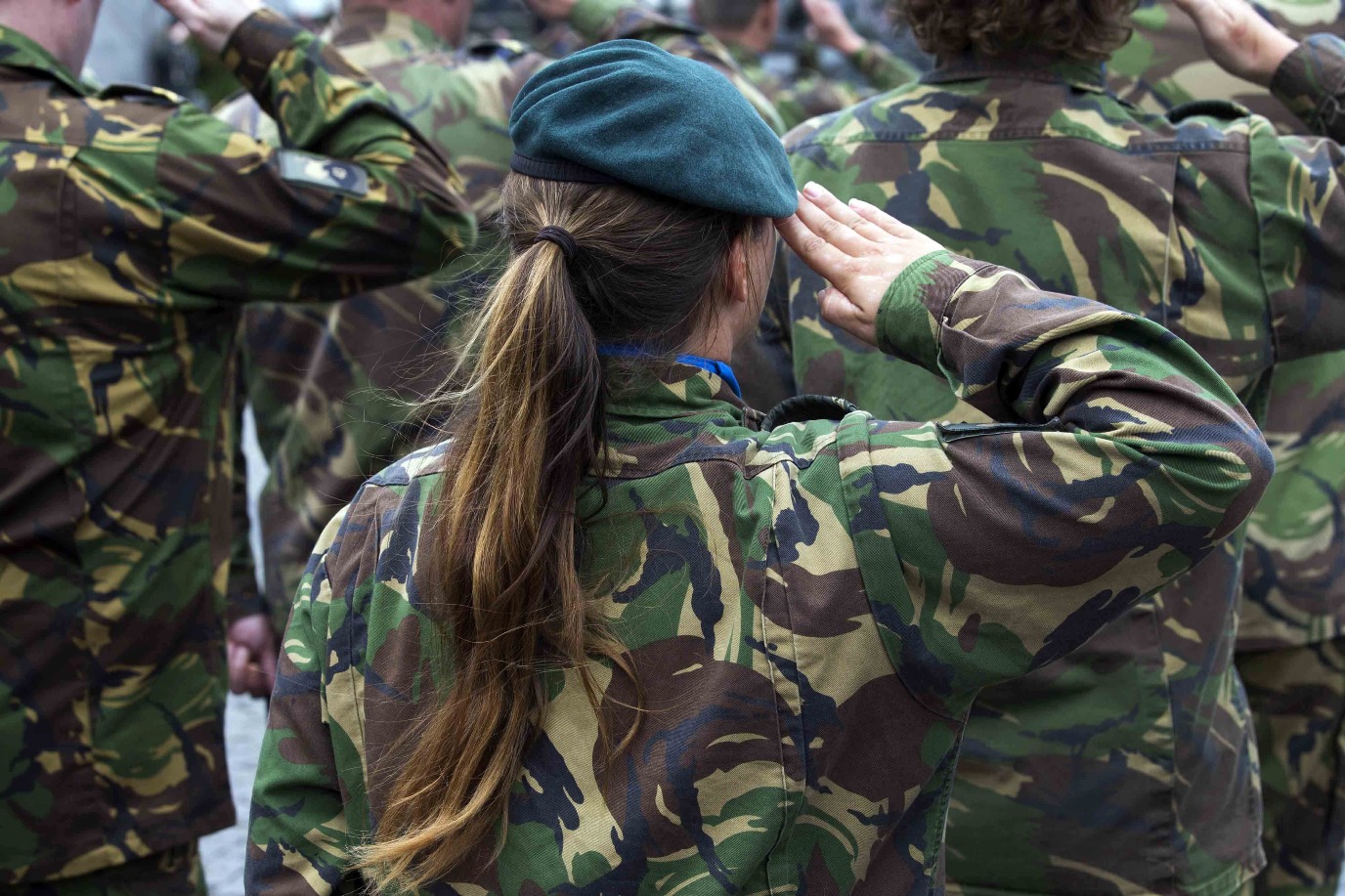Ministry of Defence sustained difficult position of women in armed forces

Women and armed forces - for decades, it has been an unfortunate combination. Recruiting, retaining, and promoting women is a problem for the Ministry of Defence. With her research, PhD student Kim Bootsma shows that this has been going on for decades and that, initially, the Ministry of Defence sustained this problem. Bootsma will be awarded a PhD by the University of Groningen on 6 June.
The Ministry of Defence is trying to recruit and retain more women, but they seem to be unable to succeed. In addition, there are still few female military personnel in top positions and in higher ranks. With her research, Bootsma placed this problem in a historical perspective. She shows that the problem already existed in the 1970s and 1980s, and that the Ministry of Defence itself continuously sustained it because of the way it approached the integration of women.
From women's corps to general access
In the 1970s and 1980s, what was then called the ‘integration’ of women in the Royal Netherlands Armed Forces started. The military women's corps Milva, Marva, and Luva were disbanded and for the first time, women were given access to a wide range of military positions, units, and study programmes that had previously only been available to men. Unlike other NATO countries, the Dutch government chose to make no exceptions for the so-called ‘combat positions'; women should be able to sail, fly, and join the Infantry, as long as they met the requirements.

Unpredictable process
In her PhD thesis, Bootsma describes how this process of integration unfolded up until the 1990s, and how female military personnel were assigned a place in the military organization based on the definitions of 'gender'. 'My research shows that the history of women in the Royal Netherlands Armed Forces is not a linear, progressive story as is often suggested', poses Bootsma. It is a history with an unpredictable process, in which female military personnel were disadvantaged continuously in all kinds of ways on the basis of gender.’
Lack of clarity about level of integration
Although women formally gained access to almost all positions and units within the Royal Netherlands Armed Forces from 1978 onwards, this did not mean they were given equal opportunities. ‘Beforehand, there was no agreement at all about how 'far’ the integration of female military personnel should go. This was a topic of vigorous debate', says Bootsma. Within the Royal Netherlands Armed Forces, there was considerable resistance to the integration of women, and from all sides, efforts were made to restrict the opportunities for them.
'Combat positions' as a means of exlusion
To limit the opportunities for women, not only existing views about women (and men) were drawn upon, but new definitions of gender were created. Bootsma: ‘For example, the term 'combat position’ was reinvented to exclude women from certain positions. We also see that in the 1980s, 'biological’ differences between men and women were constantly emphasized, whereas before that period, this hardly played a role in the debate. All of this shows that the (still existing) different career prospects and opportunities for women and men in the Royal Netherlands Armed Forces were mainly legitimized on the basis of gender definitions. They were not explained by them.’
More information
Kim Bootsma
| Last modified: | 11 July 2024 2.35 p.m. |
More news
-
12 March 2025
Breaking news: local journalism is alive
Local journalism is alive, still plays an important role in our lives and definitely has a future. In fact, local journalism can play a more crucial role than ever in creating our sense of community. But for that to happen, journalists will have to...
-
11 March 2025
Student challenge: Starting Stories
The Challenge Starting Stories dares you to think about the beginning of recent novels for ten days.
-
11 March 2025
New: Sketch Engine, tool for language research
Sketch Engine is a tool for language research, which can also be used for text analysis or text mining.
